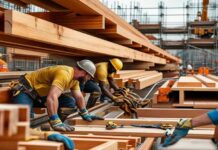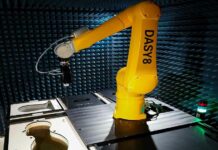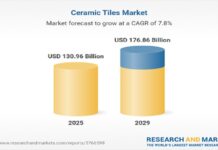Have you ever wondered how major construction projects manage to keep pesky critters at bay? It’s a challenge that many don’t consider until they’re knee-deep in the chaos of building.
Imagine this: you’re in the middle of laying down the foundation for a new building when you discover a colony of termites or a network of rat burrows. Not only can such pests delay the project, but they can also lead to significant financial losses.
Understanding Pest Challenges in Construction
In major construction projects, understanding pest challenges is imperative to mitigate potential delays and prevent financial losses. This section delves into the common pest-related difficulties encountered during construction and offers solutions to manage them efficiently.
Identifying Common Pests
Common pests include termites, rats, and mice, which are known for their destructive impact on building materials such as wood, wiring, and insulation. The team from Empire Pest Control KL suggests that early identification of pest activity can help minimize long-term damage and reduce costly repairs.
Their expertise highlights the importance of thorough inspections and immediate intervention when signs are detected. Recognizing signs of these pests early in the project can significantly curtail their harmful effects. For example, termite presence is often indicated by discarded wings, mud tubes, or wood that sounds hollow when tapped.
Assessing Risks and Impact
Pests pose significant risks, particularly in structural integrity. Rodents can gnaw through vital wiring, potentially causing fire hazards.
Termites can weaken wooden structures, leading to costly repairs. It’s crucial to assess these risks at the onset of a project to carry out effective strategies tailored to these challenges.
Strategic Response to Infestations
Immediate action can prevent minor pest issues from escalating into major setbacks. If pests are detected, a swift response involving pest control professionals using IPM (Integrated Pest Management) approaches can resolve problems before substantial damage occurs. IPM not only addresses eradication but also emphasizes prevention, using environmentally sensitive techniques.
Preventative Measures
Implementing preventative measures plays a critical role in managing pest challenges. Using pest-resistant materials and sealing potential entry points as discussed previously helps safeguard the construction site from pest intrusions. This proactive approach not only addresses immediate concerns but also contributes to the long-term durability and safety of the structure.
By recognizing and addressing these challenges proactively, we can ensure that our construction projects proceed smoothly, without interruptions due to pest-related issues. This not only supports project timelines but also optimizes economic expenditure throughout the construction phase.
Pre-Construction Pest Control Strategies
In addressing pest control during construction projects, implementing pre-construction pest control strategies proves invaluable. These methods form a defensive line against pests, ensuring the structural safety and longevity of the building. Here, we’ll investigate into key strategies like soil treatment and the use of physical barriers that help this protection.
Soil Treatment
One pivotal approach involves soil treatment, which targets termites primarily. By applying liquid termiticides under and around the building’s foundation, we create a chemical barrier. This barrier not only deters but can eradicate termites, maintaining the integrity of the structure.
- Application Timing: The initial treatment occurs before the foundation is poured. Further applications may follow after final grading and landscaping to encapsulate comprehensive coverage.
- Special Cases: For constructions with crawlspaces, focused application around piers and the foundation ensures adequate protection without needing to treat the entire area extensively.
Physical Barriers
Moving from chemical to physical defenses, installing physical barriers offers another robust method to block pests, especially termites, from infiltrating the construction. These barriers are placed during the foundational construction phase, integrating seamlessly with the building’s structure to afford long-term peace of mind. Constructed from materials like metal or crushed rock, they prevent termites from accessing wood and other vulnerable materials.
Here, they are placed strategically in the foundation to block potential entry points, effectively stopping termites in their tracks. These barriers not only deter termites but are also a sustainable choice, requiring no chemical replenishment.
By adopting these strategies, we take proactive steps to mitigate potential disruptions. This approach not only safeguards the construction project from costly delays and repairs but also ensures that the structure is built to last, free from the devastation pests can unleash.
Active Pest Management During Construction
In tackling pest management during construction, a focused approach is essential. Adopting both physical and chemical barriers provides a robust defense against pests, ensuring the project’s integrity from the ground up.
Implementation of Physical Barriers
We install physical barriers, like metal sheets or crushed stone, directly into a building’s foundation. This method prevents termites from penetrating wood and other vulnerable materials. Such barriers, embedded during the foundational phase of construction, act as a long-lasting protective shield without requiring chemical replenishment.
Utilization of Chemical Treatments Safely
We apply chemical treatments strategically to minimize any environmental impact and ensure safety on the construction site. These treatments often include termiticides, which we administer around the building’s foundation. It’s crucial these applications occur before foundation pouring and after final grading to maximize effectiveness and safety.
Post-Construction Pest Prevention
After ensuring the integrity of the construction site, focusing on post-construction pest prevention is crucial. The aim is to maintain a pest-free environment over the long term. We’ll investigate into specific techniques that are both effective and necessary for sustained pest management.
Long-Term Pest Monitoring Techniques
Implementing long-term pest monitoring techniques forms a crucial part of proactive pest management. Regularly scheduled inspections, possibly every quarter, are fundamental. We use tools such as bait stations and pheromone traps to continually monitor any pest activity. Remote monitoring technology also plays a key role, enabling us to receive instant alerts about pest presence, thereby facilitating swift action.
Educating Construction Teams on Pest Prevention
Educating our construction teams on pest prevention significantly reduces the risk of future infestations. We conduct training sessions to familiarize crews with the signs of pests and the correct steps to take if they spot potential threats. Besides, we emphasize the importance of maintaining the barriers and treatments applied during the construction phase. This knowledge empowers our teams to act as the first line of defense against pests.
Conclusion
We’ve explored a range of effective strategies to tackle pest control during construction projects. By integrating both pre-construction and post-construction measures we can ensure our projects are not only pest-free but also structurally sound for the long haul. Remember it’s crucial to stay vigilant and proactive about pest management to avoid any potential disruptions or damages. Let’s keep our construction sites safe and secure by adhering to these best practices and continuously educating our teams on the importance of pest control. Together we can build stronger safer structures that stand the test of time—and pests!
Frequently Asked Questions
What are the common pests encountered during construction projects?
During construction projects, common pests include termites, rats, and mice. These pests can cause significant damage to building materials and pose risks to the structural integrity of the project.
How can discovering pests like termites or rats affect construction timelines?
Discovering pests such as termites or rats during construction can lead to delays and financial losses. These pests often damage materials and foundations, necessitating additional repairs and preventive measures.
What is Integrated Pest Management (IPM) and how does it help in construction projects?
Integrated Pest Management (IPM) is a comprehensive strategy employed to address and prevent pest infestations. In construction, IPM involves using a combination of techniques, including chemical treatments and physical barriers, to protect the project’s integrity.
Why is soil treatment important in preventing termite infestations in buildings?
Soil treatment involves applying liquid termiticides around the foundation to create a chemical barrier against termites. This treatment is crucial because it helps to prevent termites from accessing and damaging wooden structures and ensures the longevity of the building.
What are physical barriers and how do they protect construction projects from pests?
Physical barriers, such as metal shields or crushed rock, are integrated into the building’s foundation during construction to prevent pests, especially termites, from penetrating the structure. These barriers provide a long-term, sustainable solution without ongoing chemical usage.
How do post-construction pest prevention strategies differ from pre-construction measures?
Post-construction pest prevention focuses on maintaining a pest-free environment over the long term. It involves regular inspections, the use of bait stations, and pheromone traps, along with educating construction teams on maintaining barriers and recognizing pest signs. In contrast, pre-construction measures primarily involve applying treatments and installing barriers to prevent initial infestations.
What role does remote monitoring technology play in managing pest presence post-construction?
Remote monitoring technology is significant in post-construction pest management as it provides instant alerts about pest presence. This allows for swift action and control, helping maintain the structural integrity and safety of the building without extensive manual oversight.




























